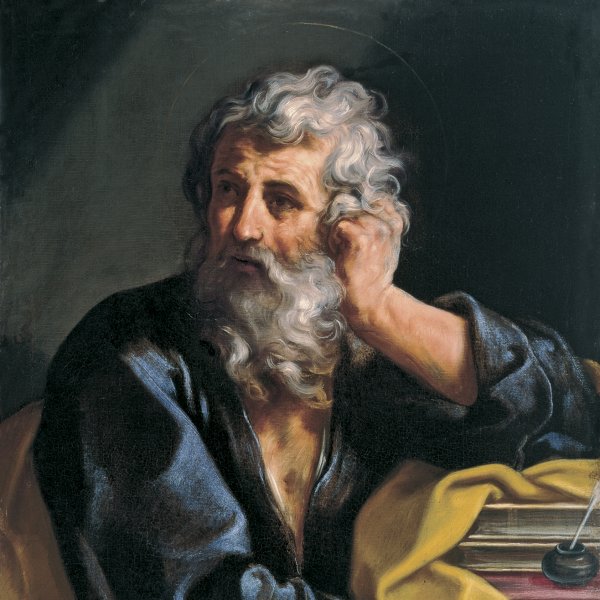Carlo Maratta
Carlo Maratta moved to Rome in 1636 at the age of eleven. The following year he entered Andrea Sacchi’s studio, remaining there until Sacchi’s death in 1661. His master’s style fell within the most classicising trend in Roman painting and Sacchi upheld line and disegno over colour. Maratta’s training was completed by copying classical sculpture and the great works of the Renaissance and early 17th century masters. His first public commission as an independent painter was for The Adoration of the Shepherds of 1650, painted for the church of San Giuseppe dei Falegnami in Rome, which marked the start of a lengthy career of public and official commissions. The 1650s were crucial for the evolution of Maratta’s style: while Sacchi’s influence was still evident, it was now combined with that of other artists, most importantly Pietro da Cortona. The latter upheld the importance of colour and was the leading figure in the trend opposed to that of Sacchi. In 1656 Maratta was involved in the project for the decoration of the Quirinale palace, commissioned by Alessandro VII and directed by Pietro da Cortona. For the first time he began to deploy a palette of lighter colours that would characterise all his subsequent output. Maratta’s style can be located between the rigour of Sacchi and the expressivity of Cortona.
The two decades following Sacchi’s death were the most brilliant in Maratta’s career. He achieved international renown, worked for the most prestigious Italian patrons and ran one of the most important and prolific studios. In 1664 he was elected president of the Accademia di San Luca, while in 1698 he was made life-long president of that institution. Altarpieces occupy the most important position within Maratta’s oeuvre, but he also executed portraits, decorative fresco cycles and designs for sculpture. Around the turn of the century economic issues resulted in a significant decline in the number of large official commissions, and for the last years of his life Maratta was active as a restorer.





